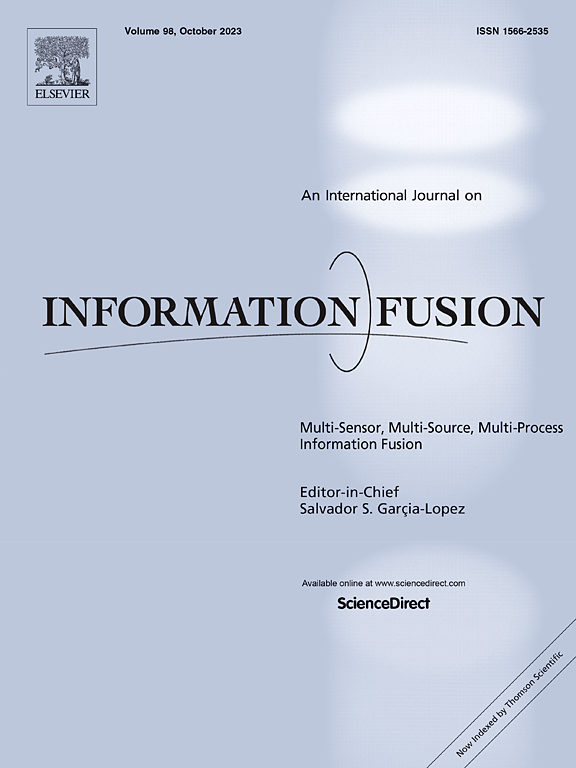基于脑电图的情感识别自监督数据增强策略
IF 14.7
1区 计算机科学
Q1 COMPUTER SCIENCE, ARTIFICIAL INTELLIGENCE
引用次数: 0
摘要
由于脑电图(EEG)数据的稀缺性问题,利用深度学习建立高精度的情绪识别模型面临很大挑战。近年来,数据增强显著提高了深度学习的性能。为此,本文提出了一种创新的自监督数据增强策略SSDAS-EER,生成高质量、多样化的人工脑电特征图。首先,结合差分熵(DE)和功率谱密度(PSD)特征构建脑电信号特征图,获取丰富的空间和频谱信息;其次,采用掩蔽策略对部分脑电特征图进行掩蔽,使所设计的生成对抗网络(GAN)专注于学习未被掩蔽的特征信息,并有效填充被掩蔽的部分;同时,改进后的GAN能够准确捕捉到空间信息和频谱信息的分布特征,从而保证生成的人工脑电信号特征图的质量。特别地,本文引入了自监督学习机制,进一步优化设计的分类器,使其对生成的样本具有良好的泛化能力。该策略将数据增强和模型训练集成到端到端管道中,能够为每个主题增强EEG数据。本研究在DEAP数据集上进行了系统实验,结果表明,该方法对所有被试的效价和唤醒的平均准确率分别为97.27%和97.45%,比应用该策略前分别提高了1.46%和1.39%。同时,验证了生成的脑电信号特征图与原始脑电信号特征图的相似度。这些结果表明,SSDAS-EER在脑电情绪识别任务中有显著的性能提升,显示了其在提高脑电数据利用效率和情绪识别准确率方面的巨大潜力。本文章由计算机程序翻译,如有差异,请以英文原文为准。
A self-supervised data augmentation strategy for EEG-based emotion recognition
Due to the scarcity problem of electroencephalogram (EEG) data, building high-precision emotion recognition models using deep learning faces great challenges. In recent years, data augmentation has significantly enhanced deep learning performance. Therefore, this paper proposed an innovative self-supervised data augmentation strategy, named SSDAS-EER, to generate high-quality and various artificial EEG feature maps. Firstly, EEG feature maps were constructed by combining differential entropy (DE) and power spectral density (PSD) features to obtain rich spatial and spectral information. Secondly, a masking strategy was used to mask part of the EEG feature maps, which prompted the designed generative adversarial network (GAN) to focus on learning the unmasked feature information and effectively filled in the masked parts. Meanwhile, the elaborated GAN could accurately capture the distribution characteristics of spatial and spectral information, thus ensuring the quality of the generated artificial EEG feature maps. In particular, this paper introduced a self-supervised learning mechanism to further optimize the designed classifier with good generalization ability to the generated samples. This strategy integrated data augmentation and model training into an end-to-end pipeline capable of augmenting EEG data for each subject. In this study, a systematic experiment was conducted on the DEAP dataset, and the results showed that the proposed method achieved an average accuracy of 97.27% and 97.45% on all subjects in valence and arousal, respectively, which was 1.46% and 1.39% higher compared to the time before the strategy was applied. Simultaneously, the similarity between the generated EEG feature maps and the original EEG feature maps was verified. These results indicated that SSDAS-EER had significant performance improvement in EEG emotion recognition tasks, demonstrating its great potential in improving the efficiency of EEG data utilization and emotion recognition accuracy.
求助全文
通过发布文献求助,成功后即可免费获取论文全文。
去求助
来源期刊

Information Fusion
工程技术-计算机:理论方法
CiteScore
33.20
自引率
4.30%
发文量
161
审稿时长
7.9 months
期刊介绍:
Information Fusion serves as a central platform for showcasing advancements in multi-sensor, multi-source, multi-process information fusion, fostering collaboration among diverse disciplines driving its progress. It is the leading outlet for sharing research and development in this field, focusing on architectures, algorithms, and applications. Papers dealing with fundamental theoretical analyses as well as those demonstrating their application to real-world problems will be welcome.
 求助内容:
求助内容: 应助结果提醒方式:
应助结果提醒方式:


